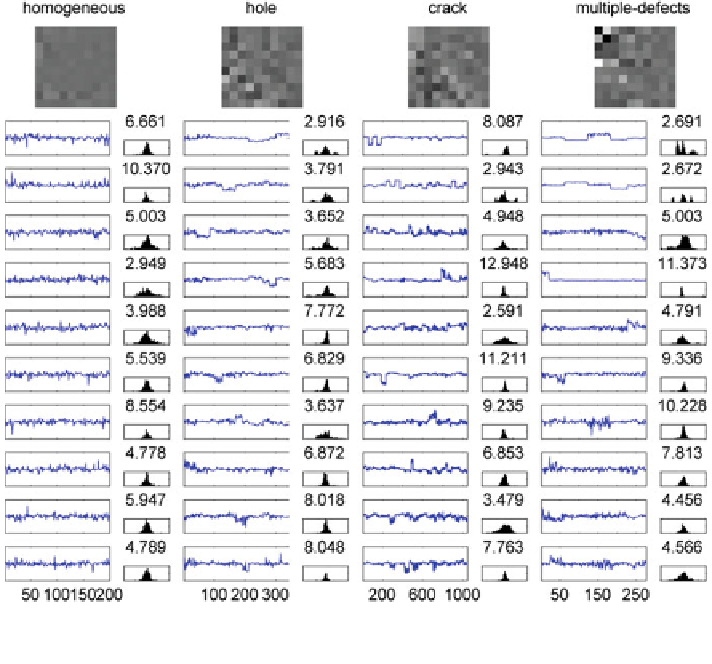Information Technology Reference
In-Depth Information
Fig. 5.10 Mixing matrices and sources estimated for four different kinds of defective materials
tested in impact-echo experiments. The kurtosis values are displayed for the source densities
smoothed). The results show that ICA-based classifiers perform better in the case
of data with implicit non-gaussianity of the sources compared with the other tested
classifiers. In addition, the non-parametric estimation of the source densities
allowed more accurate data modelling since no restriction on the data model was
assumed.
Table
5.1
shows the results obtained by non-parametric Mixca in the experi-
ments for the different levels of classification. The percentage of success decreases
steadily for higher grades of knowledge about the material defects. Note that, at
the most complex level of classification (12 classes at the defect dimension level),
a classification accuracy of 78.1 % is obtained. This may or may not be appro-
priate depending on the application; however, in any case it is an interesting
percentage if we take into account the simplicity of the procedure (one only
impact) and the number of classes discerned. The homogeneous specimens are
always well classified in all levels; the multiple-defect specimens are the worst
classified at higher levels; and the hole specimens show the most cases of mis-
classification at lower levels.

Search WWH ::

Custom Search